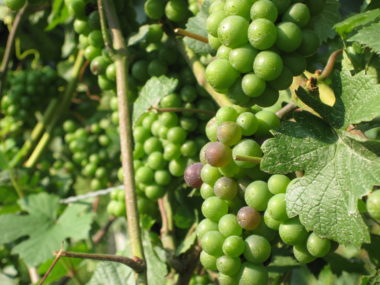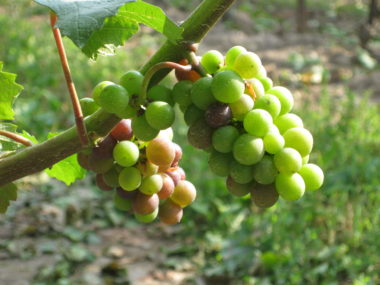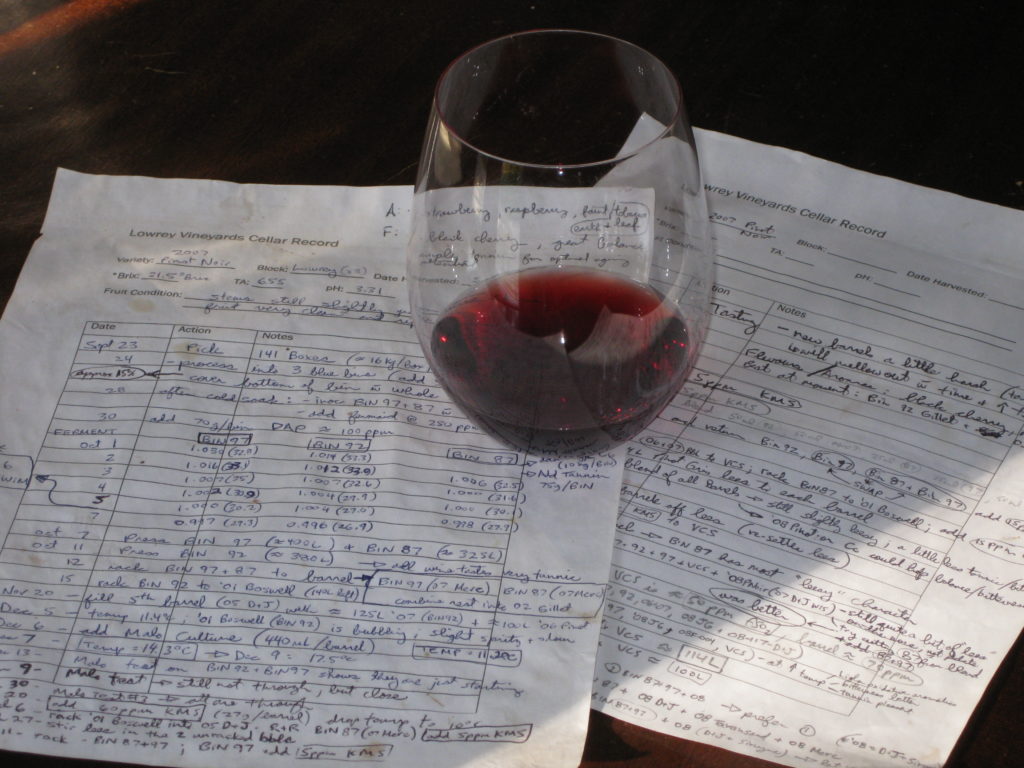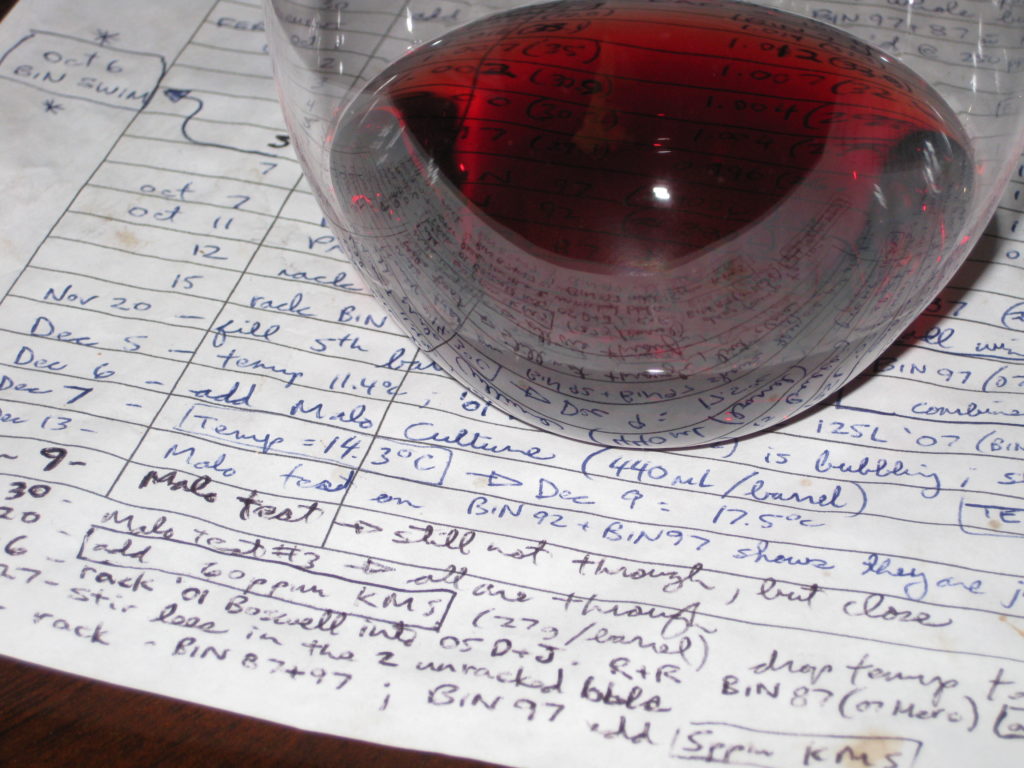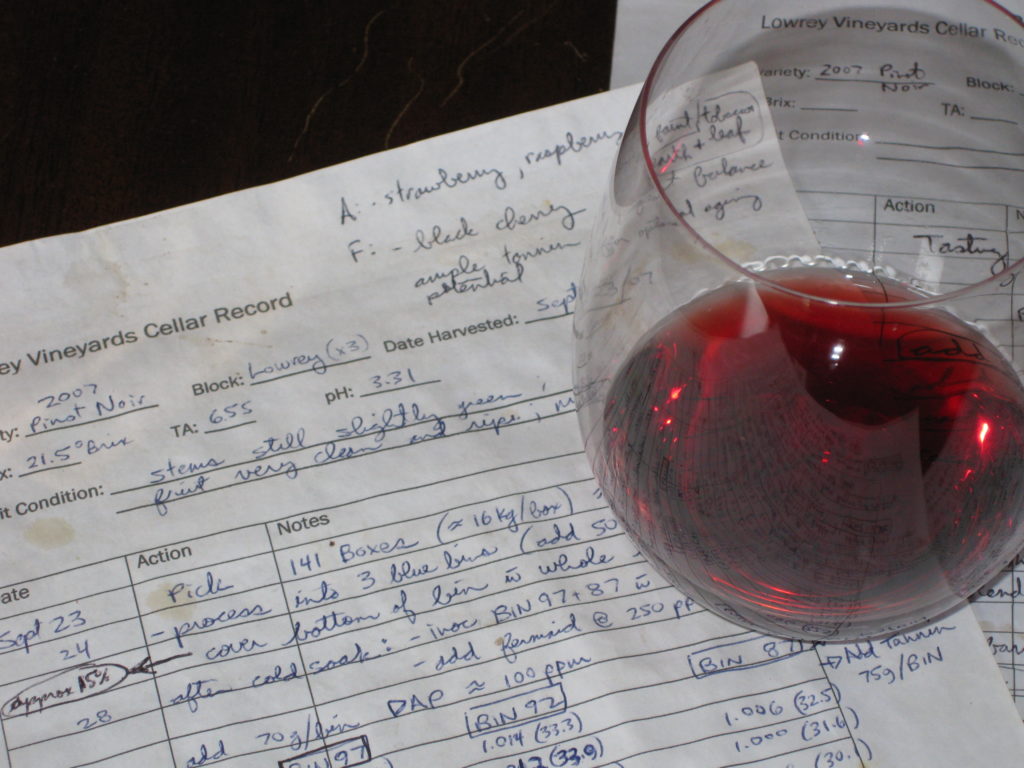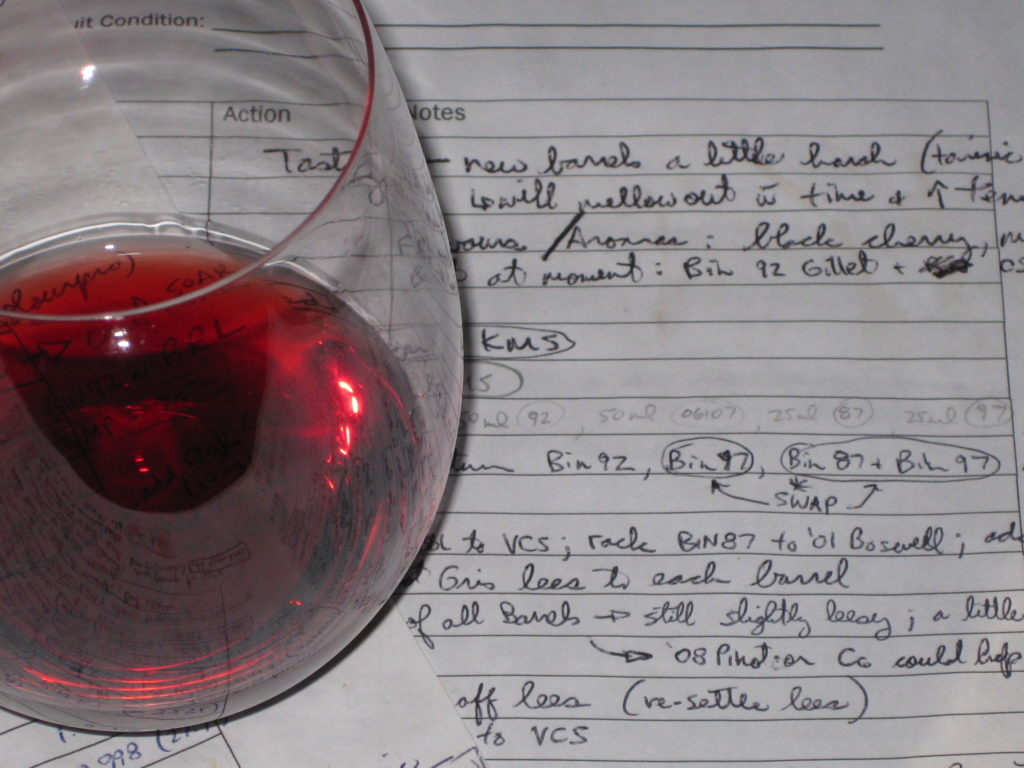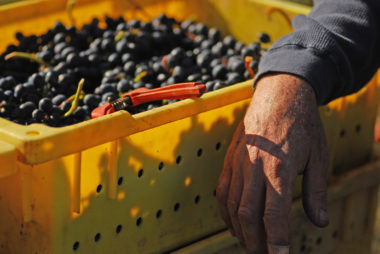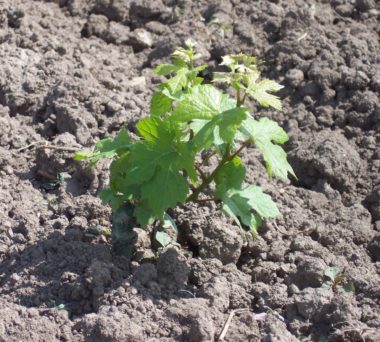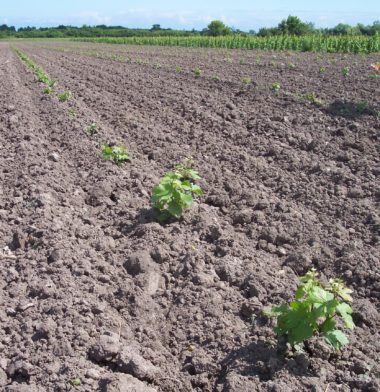2008 Five Rows Pinot Noir:
Now that we’ve been at this venture for a few years, it’s interesting to look back at my old blog entries upon the release of a new wine. This entry from October 6, 2008 aptly tells the story of our 2008 Pinot Noir:
“Vintage ‘08 is upon us and to this point things have been…well…in a word …WET!! Enough rain already. I mean just when I thought we were in the clear we got doused by the remnants of a hurricane, and for the record: I don’t like Ike. Thankfully, the last couple of weeks have more than made up for the rain, with plenty of sunshine and perfect ripening conditions for the early varietals.
As per usual, the “Heartbreak Grape”, Pinot Noir, lived up to its moniker and provided lots of nervous moments and second guessing. In fact, one day in the vineyard while pondering a harvest timing decision, I found myself singing aloud to the Clash hit “Should I Stay or Should I Go”. The Pinot were clean but slightly underripe, with threatening weather on the horizon (“If I go there will be trouble / And if I stay it will be double”). Ultimately, we decided not to pick and wait out what suddenly became Hurricane Ike. All the water led to some berries actually splitting and roused us into action. Led by a Pinot-loving mother hell-bent on saving her crop, the three of us spent two mind-numbing days cutting out individually split berries and underripe clusters. On September 16th and 17th we finally hand-picked our first two tonnes of fruit. In the end, what came in was ripe, clean (thus receiving the Wilma stamp of approval) and fermented into some really intriguing stuff. I experimented with a new yeast strain this season called W15, which after pressing today, is the early favourite to put into our 2 new Sirugue barrels.”
Fast-forward to 2011 and that Pinot-loving mother can be proud of the wine she helped save. The 2008 is reminiscent of many past wines featuring Lowrey Pinot. A classic blend of bright cherry fruit, some floral notes and spice dominate the nose. Flavours of black raspberry and vanilla bean resolve into a pleasingly soft mouthfeel. Tannins are much more approachable than the 2007 Five Rows Pinot Noir at the same stage.
Technical Data: 12.6% alcohol, 5.4 g/L residual sugar, pH 3.45
Price: $50/bottle
Barrels: 5
Production: 106 cases

